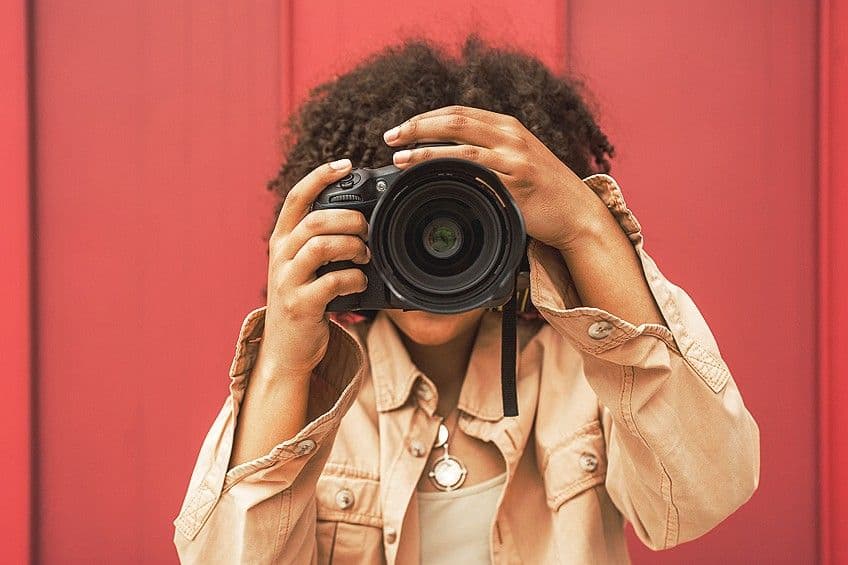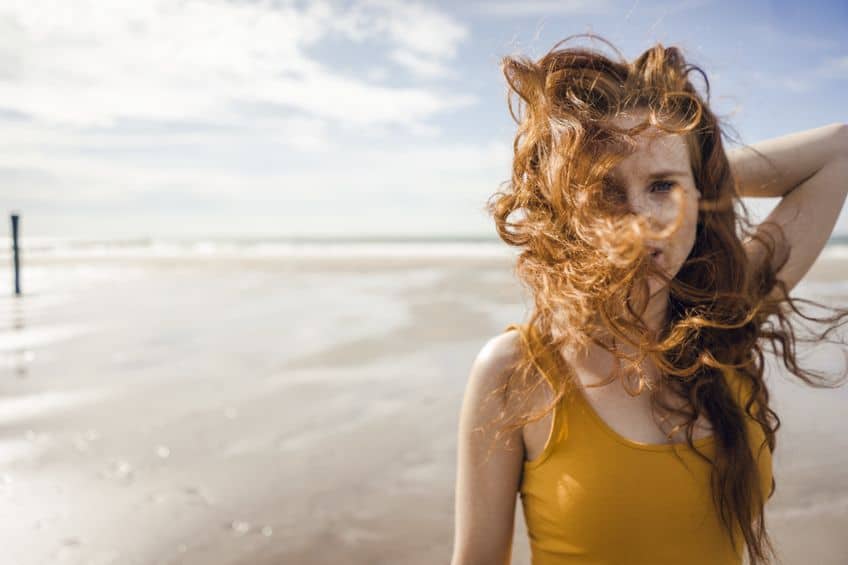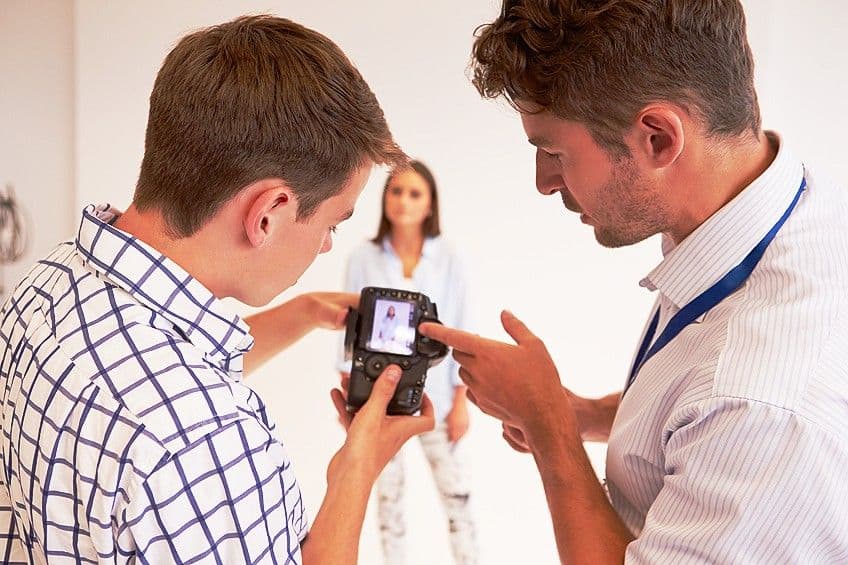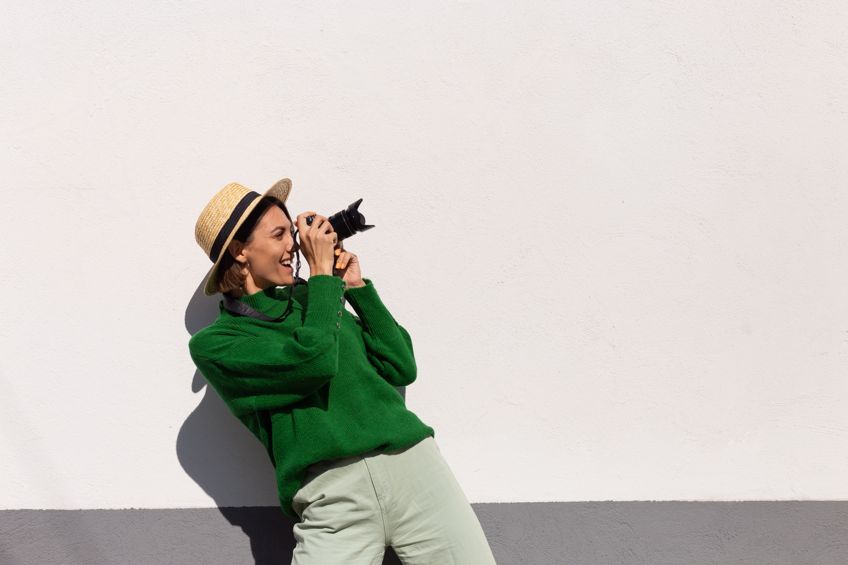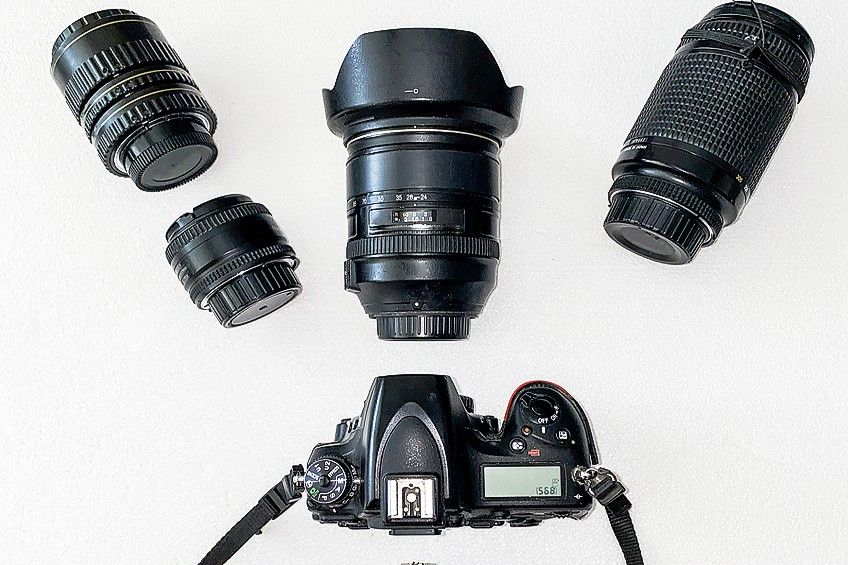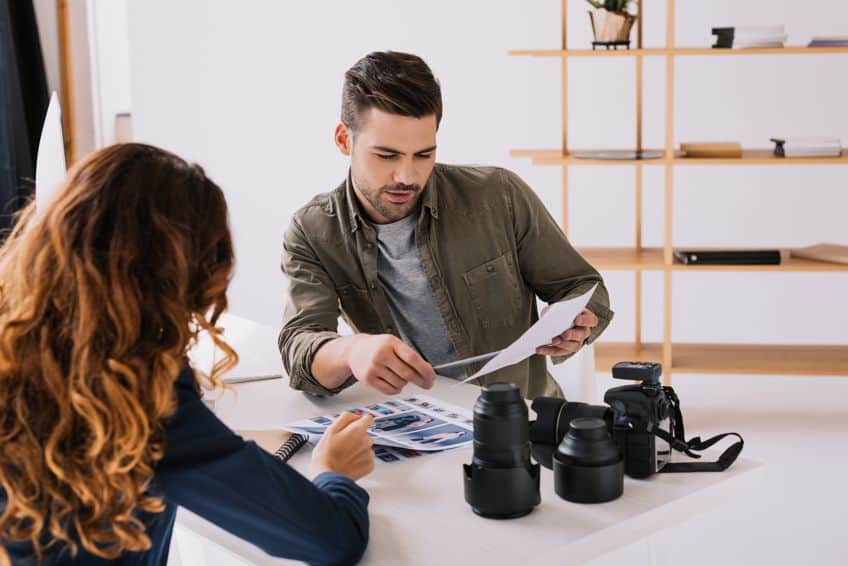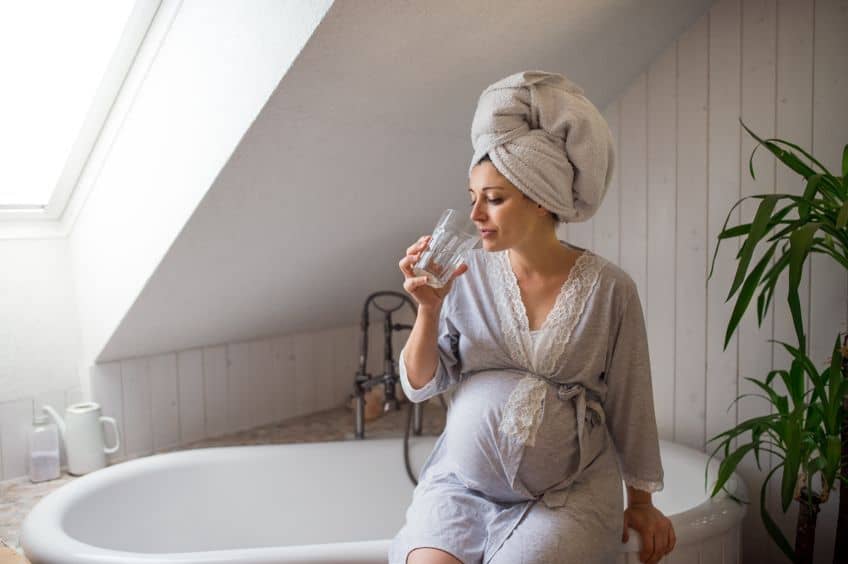What Is Portrait Photography? – From Selfies to Masterpieces
What is portrait photography, and what are the different styles of portraiture? Inspired by portraits in painting, the art of portrait photography is widely recognized as an art form in its own right with many fine artists maneuvering the camera to capture some of the most unforgettable and exquisite personalities in history. In this article, we will explore the art of portrait photography, as well as its history, the different types of portraits, effective composition techniques, equipment, and top tips for practicing portrait photography. Keep reading for everything you need to know about portrait photography, including the many ways in which you can create award-winning portraits!
Capturing the Soul: Exploring the Art of Portrait Photography
“Photography is a way of feeling, of touching, of loving. What you have caught on film is captured forever… It remembers little things, long after you have forgotten everything.” – Aaron Siskind. What is portrait photography? What does it mean to capture the soul of the sitter? and what makes a good portrait photo? If these questions do not entice you to explore the art of portraiture in photography, then perhaps its origin and innovative techniques will! The art of portrait photography is the practice that extends beyond the simple capturing of an individual’s appearance. The art of portraiture itself is a medium through which one can be immortalized through the photographic image and capture a range of emotions and visual depth that cannot otherwise be replicated in a medium such as painting.
A single frame can capture more than 1000 words and is one of the most powerful tools for storytelling.
When unpacking definitions of portraiture photography, one can also expect to narrow it down to the ability of a photographer to capture the unique personality of the sitter and craft a narrative into the inner world of the sitter such that the person’s reflected image becomes a unique experience for others to marvel at. Through a combination of select photography equipment, composition, lighting, and perspective, portrait photographers can curate and capture visually striking images that become iconic and shed light on a range of subjects. In fine art, portraiture photography is used to not only immortalize and recall the legacies of popular figures and influential personalities, rather, it is also used to advocate for social and political changes and reflect the state of the world as experienced by the sitter who sheds light on the human condition.
In fine art, portrait-style photography connects viewers with the sitter and the photographer such that relationships are formed in observation of the stories behind the faces of the sitters and the hands of the camera. Portrait photographs also offer one a glimpse into time, place, and context with hidden and embedded meaning waiting to be voiced through the language of storytelling. Photographers, therefore, have the power to capture vulnerable emotions that make one witness humanity and leverage artistic vision and creativity to relay specific messages.
Finally, portraiture photography can also evoke a reaction in the viewer depending on the featured sitter and invites one to introspect beyond the façade of beauty or humans and into the soul of the world, its anima mundi.
Tracing the Evolution of Portrait Photography
“The best thing about a picture is that it never changes, even when the people in it do.” – Andy Warhol. When examining the history of portrait-style photography, you will find that it has its humble beginnings laid in the 19th century and has evolved significantly over the last two centuries. Since the advent of photography by pioneers such as Louis Daguerre and William Henry Fox Talbot, portraiture had evolved from simple stoic documentation of an individual, dead, and alive, to a Contemporary and innovative art form, which can be used to narrate powerful stories that challenge traditions.
Through the evolution of aesthetics, portraiture photography offers a window into the individual expression of one’s emotions, which is an intimate act itself to either sit for a photograph or capture it.
Louis Daguerre’s invention of the daguerreotype in 1839 completely changed the way people thought of image making and enabled the production of images with precision and detail. Early 19th-century portrait photographs adopted a stoic approach in the face of the camera, which reflected the culture of the society at the time and was more formal. Towards the mid-19th century, other photographic techniques emerged which made photography cheaper and more accessible to use for amateur artists, and as such, the art of portraiture gained popularity. Most notable was the invention of the collodion process by Frederick Scott Archer, which helped photographers achieve a higher degree of detail in their portraits. During this period, many people began to adopt a relaxed and casual approach to posing for portraits that made portraiture seem less of a chore and more of a natural and enjoyable event.
The development of portable cameras around the late 19th century further widened the scope of portraiture photography as a practice and allowed photographers to move beyond the studio and into the homes and places of others. With portability, artists were able to seek out their subjects, and as such, candid portrait photographs emerged. The photography of people in their natural environments offered glimpses into the lived realities of diverse groups of people and allowed a form of visual travel for viewers to enjoy. Following the candid nature of portraits, documentary photography grew in popularity and skyrocketed after the introduction of color photography, which brought an extra sense of wonder to many artists.
The 20th century was a period of rich documentation that introduced vibrancy to the traditional black-and-white film and allowed one to recognize the sitter in a context that was closer to reality.
With color, artists were also able to enhance the atmosphere and mood of the portrait such that the photograph became a tool for emotional expression. Popular 20th-century photographers took advantage of photography and portraiture to lay the foundations of their careers. These include artists such as Andy Warhol, Richard Avedon, Annie Leibovitz, and Steve McCurry, whose iconic images continue to inspire many.
After the turn of the 21st century, photography took a digital route in arms with the technology of the Modern era, which made the art form more accessible than ever. Today, there are a multitude of high-resolution cameras, advanced editing software, and artificial intelligence programs that help artists enhance their portraiture projects and continue to produce unique images.
Unpacking the Different Types of Portrait Photography
“A portrait is not made in the camera but on either side of it.” – Edward Steichen. From street portraiture to corporate portraiture, the world of portrait style photography is diverse. Each different type of portrait photography can be used to convey different stories and is defined by specific approaches to serve particular functions. Each style of portrait photography showcases the diversity of the human experience and offers one insight into the complexity of emotions as well as “what is not shown”.
Below, we will explore the different types of portrait photography and their approaches to portraiture that make them unique in their own right.
Studio Portraits
Studio portraits are a type of portrait photography that involves the photographer working within a controlled environment, such as a studio or photo lab. Studio portrait photographs can be distinguished from other portraits since their visual characteristics offer a more “clean” aesthetic than candid images. Studio-shot portraits are shot within specific lighting conditions that focus primarily on the traditional role of portraiture, defined by capturing the sitter’s face in good lighting and with as much detail as possible. Studio portraits often feature neutral or clean backgrounds to amplify the focus on the sitter.
Studio photographers also have plenty of control over the lighting, which enables them to alter the mood and atmosphere of the image. Studio photographers may employ tools such as soft boxes, reflectors, and umbrellas to achieve the optimum and desired lighting effects. Such tools allow photographers to adjust the light and create shadows where desired for added depth. Renowned photographers such as Peter Lindbergh, Annie Leibovitz, and Platon are recognized as leading Contemporary studio portrait photographers who intentionally use studio equipment, props, and controlled lighting to manipulate and guide the production of images.
Environmental Portraits
One cannot overlook the role of the environment and our relationship to our context that shapes the overall energy of the sitter and their relationship to the artist. Environmental portrait photography is a type of portrait photography that focuses on the relationship of the individual to their environment and is often shot in a controlled manner. The role of environmental portraits is not to be underestimated since it exhibits the background lifestyle or context in which the sitter is captured.
These types of portraits usually narrate stories related to the sitter’s environment and can reflect aspects or clues into the sitter’s life.
The complexity of environmental portraits is best highlighted by photographers such as Steve McCurry, whose famous Afghan Girl portrait was shot in a refugee camp and had since become a global symbol of the context and emotion of the time displayed towards refugees. Environmental portraiture can be used as a powerful tool for highlighting inequalities in society as well as socio-political issues that are unpublished by the media. Photographers such as Sebastião Salgado also use environmental portrait photography to craft compelling stories around the impact of socio-political issues on people.
Candid Portraits
Candid portrait photography proved to generate the most unique images in history, which leaves one wondering whether the photographer knew such events would occur. Candid portrait photography is shot candidly and is therefore unplanned and not staged in any way. The defining part of the process of photographing candid images is that while the audience may be aware that a photographer is around, individuals are not aware of the moment at which the photographer might strike. Candid portrait photography aims to capture genuine and unposed moments of human expression as if capturing people in their natural state.
Candid portrait photography also differs from traditional portrait photography since it contains authentic expressions and scenes of people interacting with each other and the world around them. The process relies on the spontaneous ability of the photographer to decide at which moment they might capture an individual. The ability to anticipate a moment of a potentially great shot also requires experience and luck to capture a fleeting moment and reveal a “truth” to the human condition. Candid portraits thus enable deeper modes of storytelling than any other type of portrait photography.
Creative Portraits
Creative portrait photography extends beyond traditional notions and approaches to portrait photography and is centered on the photographer’s own artistic vision and approach to experimenting with alternative techniques. Creative portrait photography incorporates artistic concepts while playing with innovative tools and props to support the concept of the portrait. Creative portrait photographs captivate viewers by challenging perceptions of traditional portrait photography to evoke emotion and produce thought-provoking images.
Photographers such as Brooke Shaden and Kirsty Mitchell are praised for their work in creative portrait photography and contributions to landscape photography.
Shaden’s approach to creative portrait photography involves the use of elaborate costumes and props that are staged in carefully composed scenes that blur the viewer’s perception of reality and fantasy. Mitchell on the other hand also uses props to celebrate beauty and evoke emotions that resonate deeply with viewers. Her photography also draws from folklore and literature while experimenting with the idea of alternate realities.
Effective Composition Techniques for Portrait Photography
Crafting a compelling portrait involves more than a trained eye and requires the photographer to curate not only their equipment and pre-shoot settings, but also the composition itself and the sitter. Understanding some of the most effective composition techniques in portrait photography will help you create more impactful images that will surely catch the attention of the discerning photography fanatic. Below, we will explore a few different composition techniques that artists use to frame and curate unique and engaging portraits.
The Rule of Thirds
The Rule of Thirds is a common composition technique employed by portrait photographers to craft balanced images by making use of the divisions of frames. One may recognize the 3×3 grid on a digital camera that is useful in framing the composition and assists the photographer with the placement of the sitter’s eyes and faces in such a way that it can be placed along or at the intersections of the lines. The Rule of Thirds is an important visual curation tool that can achieve up to several visual effects in portrait photography.
By using the Rule of Thirds, the photographer can be sure to achieve a sense of harmony and balance in the composition while ensuring that it is visually pleasing.
The method also enables the sitter to be better positioned and avoids a centered or static appearance, thus making the image engaging to look at. Lastly, the Rule of Thirds technique helps the viewer explore the composition by guiding their eye using the invisible lines. If the sitter is placed off-center, the image also contains more tension and becomes a lot more interesting to look at.
Framing
Framing is among the most impactful techniques that one can take advantage of to create powerful portraits. Framing not only improves the visual impact of the image but also draws attention to the sitter. One can include props and other environmental elements to help frame the sitter by creating natural borders to stimulate visual interest and provide context to the image. The addition of natural framing also generates a sense of depth and can be used to guide the viewer’s eye into the composition. One can employ aspects of architecture such as windows or foliage to enhance the visual capacity of the image and improve storytelling. Framing is also useful in creating a sense of perspective.
Use of Background
By incorporating elements of the background or environment of the sitter, one can also vastly change the composition to effectively convey the message and tone of the portrait. Photographers need to carefully select a background to provide context to the sitter’s personality while also presenting a visual balance to the portrait. It is vital to pay attention to the elements of color, pattern, and texture in the background that can interact with the sitter and create a more harmonious composition.
Backgrounds can range from an open landscape to a textured wall or industrial cement façade, all of which can help convey different ideas about the sitter and leave a lasting impression on the viewer.
Lighting Techniques
Portrait photographers rely on lighting to transform sitters and their environments into stunning masterpieces that highlight the features of their sitters and establish a tone of presence. Photographers can manipulate light in a variety of ways to add depth and dimension to portraits, which improves the overall composition. The mood of the portrait is greatly influenced by the lighting, which impacts the reception of the sitter’s personality by the public. The key to leveraging lighting in portrait photography is to understand how it works and what techniques are best suited for portraiture. Techniques such as the Rembrandt method are ideal for creating a classical appearance with a hint of drama and involve a small triangle of light projected under one eye.
Photographers can also take advantage of soft or diffused light for a gentle portrayal of the sitter’s personality while also offering a flattering visual aesthetic. Backlighting is also used to add a sense of depth and separation in the portrait while high-key lighting is used to create minimalistic and clean portraits. Low-key lighting is perfectly suited to build a sense of intrigue and mystery while rim lighting can be used for a halo effect, to make the sitter appear “angelic” or reverent. By experimenting with different lighting techniques and angles, one can master the medium of light and achieve unique visual effects that can vastly shift the reception of a portrait.
Equipment for Portrait Photography
Like most forms of photography, portrait photography is best practiced with the right kind of equipment that will prepare you for your shoot most effectively and efficiently. Whether it is lighting equipment or finding the right tool to minimize camera shake, it is important to ensure that all the equipment you use is up to scratch on quality.
Below, we will review some of the best photographic equipment available on the market for practicing portrait photography that will also help you fine-tune your process and streamline your post-processing phase.
Cameras
The first and perhaps the most important tool you could ever need is the camera, which does not need to be super fancy or come with a million cool features (as tempting as it may be). While smartphones of 2023 make a significant dent in the photographic qualities and capabilities of capturing stunning portraits, nothing beats the feeling of holding a slightly weightier camera for a professional look and feel. Among the most highly rated cameras for portrait photography in 2023, was the Sony α7 IV, which comes equipped with a 33-megapixel full-frame sensor that will ensure the highest quality portraits you will ever see.
The camera is also equipped with an in-body image stabilization feature, which is incredibly useful when shooting low-light portraits.
Aside from Sony, the Canon EOS R was also highly rated as a great buy for amateurs and hobbyists who are interested in portraiture. The Canon boasts a great battery life with high-res EVF, high-quality images, a 30-megapixel sensor, and an attractive price point. Another full-frame affordable camera is the Nikon Z 5, which offers excellent battery life, a tilting screen, a high-resolution sensor, and a high-res EVF. If you are a bit tighter on the budget side, you can also opt for the Sony α6400, which is a crop sensor camera equipped with a high-resolution APS-C sensor and many customizable features.
Lenses
Among the best lenses recommended for portrait photography include the Nikon 58mm f/1.4 lens, which offers a unique quality, a wide focal length, and is lightweight to handle. Dubbed one of the best Nikon lenses to use in portrait photography is also the Nikon 85mm f/1.4G lens, which offers a “flattering compressed” aesthetic to the portrait while maintaining the look of a wider lens for a more personal feel.
The 85mm lens also enables one to move backward in indoor or limited spaces and is praised for its sharp focus and impressive ability to maintain its color accuracy without chromatic aberration.
The Nikon 85mm f/1.4G lens is also perfect for bokeh portraits and glamor photography. Other popular and highly-recommended lenses in the Nikon range include the Nikon 105mm f/1.4 and the pricey Nikon 70-200mm f/2.8E FL ED VR. Lenses from the Canon range that are highly rated include the Canon 85mm f/1.2, the Canon 50mm f/1.8 STM, and the impressive Canon 85mm f/1.8. Top-rated lenses from the Sony range include the Sony FE 85mm f/1.4 GM, the Sony FE 55mm f/1.8 ZA Zeiss Sonnar T, and the Sony FE 50mm f/1.8.
Tripods and Monopods
A tripod may very well be the best investment you could make as a beginner portrait photographer. Tripods are incredibly useful when shooting long-exposure portraits and can be used to craft your composition and direct your sitter. In addition to helping you create well-composed images, tripods can also improve the stability and sharpness of your work while also enabling flexibility in your composition process.
Using a tripod also frees your hands and thus lets you focus on other important aspects of the shoot such as adjusting the lighting or interacting with your sitter. Monopods are another useful tool as an alternative to tripods and are best used in situations that require the photographer to be more mobile. Monopods do not offer the same level of stability that tripods do, however, they are quick to set up and easy to transport, which makes them ideal for traveling and event portraiture photographers. When using a monopod, you can also make rapid adjustments if necessary if presented with changing shoot conditions.
Lighting Equipment
Creating portraits in photography requires lighting of natural or artificial form that can be used to help you achieve the desired effects in your composition. These include equipment such as umbrellas, soft boxes, ring lights, beauty dishes, and strobe lights, which are all used to enhance the lighting of the area. Equipment also depends on the photographer’s budget and specific shooting needs so all forms of lighting are not always necessary in most cases. Outdoor portrait photography is best executed in natural light using the golden rays of the sun in the afternoon or diffused lighting with softboxes.
One of the top recommended softboxes for portraits was the Collapsible Deep Parabolic Softbox 120cm/47.2″, which reduces shadows and provides even lighting.
Top Tips for Taking Great Portrait Photographs
“The most important element of a portrait is not the subject; it’s the photographer.” – Annie Leibovitz. There is a list of important “yays and nays” for creating impactful and compelling portraits in photography. Whether you are a beginner or simply refreshing your memory, it is wise to revise some of the best tips for taking great portrait photographs so that you can be inspired! Below, you will find the top four tips recommended by most professionals when shooting portraits.
Establish a Connection With Your Sitter
Establishing a connection with your sitter is one of the first and most important tips of all that can determine the impact of the portrait and enable the expression of genuine emotion. By making sure that the sitter feels comfortable and trusts your professionalism, you can ensure that you produce an excellent image. Once the sitter is relaxed, your image will more than likely be more authentic. When putting your sitter at ease, it is also crucial to establish an air of open communication and collaboration such that the shoot does not feel exploitative or a one-person job. As the photographer, it is essential to explore the sitter’s personal preferences for ideas on how to enhance the portrait or evoke the sitter’s personality.
By incorporating the sitter into the shoot, you can accurately narrate their story and make them feel more seen and understood.
Be Mindful of Your Sitter’s Comfort
When interacting with a client or any person, it is important to take note of the sitter’s boundaries and establish an air of respect for personal space. Asking for permission to touch the sitter’s clothing to make any minor adjustments is incredibly important in establishing consent and mutual respect. The photographer can also employ a sense of humor to foster a positive atmosphere and make light conversation connect with the sitter. Sitters may feel daunted by the camera and all the equipment, so it is key to offer the sitter enough breaks and the flexibility to stretch and hydrate during longer shoots. It is also professional practice to ensure that the sitter is ushered into a welcoming environment. This can be achieved by offering the sitter refreshments, actively listening to their ideas or needs, making small talk, and respecting their levels of comfort.
Pay Attention to the Details
When shooting your sitter, it is advised that you pay attention to certain aspects of the shoot to ensure that you capture a variety of expressions for post-processing and selection later on. Focus on details such as facial expressions since the muscle tension of the face, eye, and mouth area influence the expression conveyed and the overall mood of the portrait. The sitter’s styling and clothing are also “clues” to storytelling that can help express the sitter’s personality or context. Details on clothing such as wrinkles or small misalignments can disrupt the composition significantly. Photographic details such as the depth of field and focus are also crucial to creating visual interest while the insertion of props and accessories can also be leveraged to build the desired narrative.
One of the most important details also includes the lighting and shadows, to which the quality, direction, and intensity of light need to be paid attention.
Experiment With Different Poses and Angles
There are multiple factors to consider when experimenting with angles and poses in portraiture. Factors such as negative space, head and face orientation, environmental context, movement, and varied poses are all options through which photographers can explore to enhance the impact of the portrait. Photographers can encourage the sitter to move in different poses that best show off their personality and highlight their best features. Positions such as sitting, standing, leaning positions, and variations in the placement of the arm and legs can also be tested when using the sitter’s body to enhance the portrait. By exploring different angles and head tilts, one can also drastically alter the mood. Dynamism can be evoked when there is movement present in the portrait, which can make the image seem more authentic and candid. Shooting detailed shots and close-ups are also tactics to convey themes of intimacy and tend to have a stronger visual impact.
The art of storytelling, whether it be the context of the sitter or their personality, is a huge responsibility for the photographer who has to balance an artistic eye with the many tools and tactics of photography and portraiture. Contemporary portrait photography is an incredibly rich expanse of creative talent that offers insight into the many unique ways that artists have shifted their understanding of portrait photography, and how it can be altered to produce compelling narratives. The power of portraiture photography also lies in the relationships between the artist and the sitter, of which much thought and respect need to be established before engaging in the photographic process. We hope that this article has been useful in shaping your understanding of portrait photography and the various factors that determine its impact and effectiveness.
Frequently Asked Questions
What Is Portrait Photography?
Portrait photography is defined as the practice of using photographic equipment to capture the personality of the sitter. Various factors and equipment are employed in portrait photography to achieve different visual results depending on the purpose of the portrait. Portrait photography incorporates different backdrops, lighting, and attention to composition and expression to capture the essence of the sitter.
What Are the Different Types of Portrait Photography?
There are four main types of portraits photography. These include creative portraits, environmental portraits, studio portraits, and candid portraits, with many more variations depending on the function of the portrait.
Who Are the Most Famous Contemporary Portrait Photographers?
Among the leading photographers of the 21st century are figures such as Annie Leibovitz, Richard Avedon, Irving Penn, Cindy Sherman, David LaChapelle, Yousuf Karsh, Philippe Halsman, and Steve McCurry.
Jordan Anthony is a Cape Town-based film photographer, curator, and arts writer. She holds a Bachelor of Art in Fine Arts from the University of the Witwatersrand, Johannesburg, where she explored themes like healing, identity, dreams, and intuitive creation in her Contemporary art practice. Jordan has collaborated with various local art institutions, including the KZNSA Gallery in Durban, the Turbine Art Fair, and the Wits Art Museum. Her photography focuses on abstract color manipulations, portraiture, candid shots, and urban landscapes. She’s intrigued by philosophy, memory, and esotericism, drawing inspiration from Surrealism, Fluxus, and ancient civilizations, as well as childhood influences and found objects. Jordan is working for artfilemagazine since 2022 and writes blog posts about art history and photography.
Learn more about Jordan Anthony and about us.
Cite this Article
Jordan, Anthony, “What Is Portrait Photography? – From Selfies to Masterpieces.” artfilemagazine – Your Online Art Source. October 6, 2023. URL: https://artfilemagazine.com/what-is-portrait-photography/
Anthony, J. (2023, 6 October). What Is Portrait Photography? – From Selfies to Masterpieces. artfilemagazine – Your Online Art Source. https://artfilemagazine.com/what-is-portrait-photography/
Anthony, Jordan. “What Is Portrait Photography? – From Selfies to Masterpieces.” artfilemagazine – Your Online Art Source, October 6, 2023. https://artfilemagazine.com/what-is-portrait-photography/.


